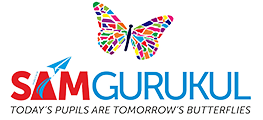Curriculum
Our curriculum offers a combination of academic and practical activities. The curriculum also aims at developing child's physical, emotional, intellectual and social skills. Our concept rooms are as resource centre, where it makes teaching a joy and learning a pleasure. The unique feature of our syllabus is that, it is innovative, theme and skill based.
Wings represent virtue, innocence, power and knowledge. Stars represents hope, peace and continuity - fluid thoughts -intuition. The "present" is based on action and will. The "future" is based on understanding and hope.
Curriculum Includes the Fallowing
Exercises Of Practical Life
The purpose and aim of Practical Life is to help the child gain control in the coordination of his movement, and help the child to gain independence and adapt to his society. It is therefore important to “Teach teaching, not correcting” (Montessori) in order to allow the child to be a fully functionalist member in his own society. Practical Life Exercises also aid the growth and development of the child’s intellect and concentration and will in turn also help the child develop an orderly way of thinking.
Language Arts
Beginning with lessons intended for the youngest child in oral language development and extending all the way to lessons in formal debate, the Language Arts portion of the Scope and Sequence was designed to be a comprehensive resource that provides essential information to Montessori guides for classrooms ranging from Toddler through Upper Elementary. As mentioned in the introduction, this was not intended to be a “one-size-fits-all” checklist of all the lessons and materials that should be covered, but instead a resource to utilize when planning lessons and recording student progress.
Geography
Montessori geography is first experienced via food! My daughter is obsessed with a show called “Emmy Eats” and has enrolled all of the other children in her cultural junk food obsession. I try to round it out with healthier lunch options. I have all of the geography puzzle maps and I purchase a flag for each country that we become interested in. We create folk crafts and listen to music, learn about the country’s animals, etc. With my daughter, we go more into the culture — including regional issues, religions, and cultural traditions.
Sensorial Materials
Sensorial comes from the words sense or senses. As there are no new experiences for the child to take from the Sensorial work, the child is able to concentrate on the refinement of all his senses, from visual to stereognostic.
Math
The Montessori math curriculum is one of the best examples of the unique beauty of Montessori materials. First, the Montessori practical life and sensorial activities give indirect preparations for math. Then the math materials continue to prepare the child for later learning. They use concrete materials to introduce abstract concepts and give a sequential understanding of mathematical concepts.
Music
Research shows that music is fundamental in early childhood education, helping children to develop in various ways, including problem-solving and logic skills. Language acquisition is enhanced as children learn songs with varied vocabulary, meter, and rhyme. Cultural lessons are enriched with songs about continents, planets, respect for Earth, and much more.
Interrelated Study Of Life and Physical Exercise
Montessori Works has a great idea for creating a movement shelf for children who need extra movement during the regular work cycle in a Montessori school. This would also work well in a home-school. Especially when there are older children, movement trays and/or baskets would be perfect for allowing 3-6 year old a chance to repeat fitness activities that older children wouldn’t need as much practice with.
History
The Montessori method views the child as one who is naturally eager for knowledge and capable of initiating learning in a supportive, thoughtfully prepared learning environment. It attempts to develop children physically, socially, emotionally and cognitively
Art
Art is one of the many ways children express themselves. Art is a way for children to communicate their feelings. It is through art that children develop their fine motor skills. In the Montessori environment, we provide open-ended art activities that help children explore and use their creativity.
Culture
Montessori cultural activities are some of my favorites. They typically include geography, history, general science, botany and zoology, music, and art.
